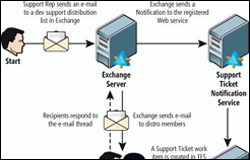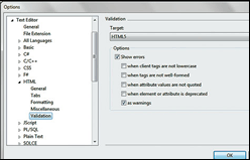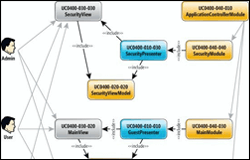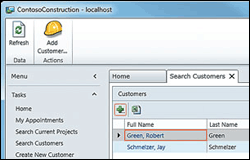August 2011
.png)
Team Foundation Server and Exchange: Build a Ticketing System Using Exchange and Team Foundation Server
What do you get if you combine the Team Foundation Server work item tracking functionality with the Exchange Web Services push notification? A unified support ticketing system that integrates e-mail and work items. Mohammad Jalloul shows you how to build it.
Mohammad Jalloul
Visual Studio LightSwitch: Advanced Programming Made Easy With Visual Studio Lightswitch
Visual Studio LightSwitch dramatically simplifies the development of data-centric business applications because it takes care of all the plumbing for you, as Beth Massi illustrates with a sample application.
Beth Massi
HTML5: Building Apps with HTML5: What You Need to Know
In this article — the first of a series that aims to show you how you can use HTML5 to build apps for the Web — Brandon Satrom introduces HTML5, describes Microsoft's approach to the new standard and helps you think about how to adopt HTML5 technologies.
Brandon Satrom
Multi-Platform Development: Portable Class Libraries: A Primer
Building on the March article, we present a solution that integrates server-side components to generate .resx files on demand from a database and embed those .resx files in .xap files, which are then streamed to the client.
Bill Kratochvil
Visual Studio LightSwitch: Build Business Applications with Visual Studio LightSwitch
Get hands-on experience with this new product in the Visual Studio family aimed at developers of all skill levels who want to quickly create data-centric business applications for the desktop, Web and cloud.
Robert Green
Artificial Intelligence: Particle Swarm Optimization
Particle Swarm Optimization (PSO) is an artificial intelligence technique which can be used to find approximate solutions to extremely difficult or impossible numeric maximization or minimization problems. It's loosely modeled on group behavior such as bird flocking and fish schooling.
James McCaffrey
Parallel Programming: The Past, Present and Future of Parallelizing .NET Applications
In the world of multi-core and manycore everywhere, parallelism is now something every developer must at least consider, and something that the millions of developers that use managed languages must be able to take advantage of. Stephen Toub shows how parallelism is evolving in .NET.
Stephen Toub
Columns
Editor's Note:
F-Sharp Focus
The creator of the F# language explains why he felt it was necessary.
Keith Ward
Don't Get Me Started:
The Power of the Default
The default settings can make or break your program. Treat them with respect.
David Platt
UI Frontiers:
Font Metrics in Silverlight
Silverlight is a graphical environments that doesn’t provide font metrics to application program developers, so Charles Petzold shows you a workaround to help you lay out text and pages.
Charles Petzold
Cutting Edge:
Static Code Analysis and Code Contracts
Dino Esposito delves into static code analysis and discusses how it can be used with Code Contracts to save you time in your builds and, more importantly, save you from nasty bugs that hit your software only in corner cases.
Dino Esposito
Forecast: Cloudy:
Searching Windows Azure Storage with Lucene.Net
There isn’t yet a lot of support for a cloud-deployed search solution, but with Windows Azure, Lucene.Net and a bit of OpenXML, just about any searching requirements can be met. Joseph Fultz gets you started with a sample implementation.
Joseph Fultz
Windows with C++:
The Windows Thread Pool and Work
Concurrency means a lot of different things to different people, but at the heart of any contemporary approach is some kind of a thread pool. Here, Kenny Kerr explains how to best use the Windows thread pool API.
Kenny Kerr
.png)






